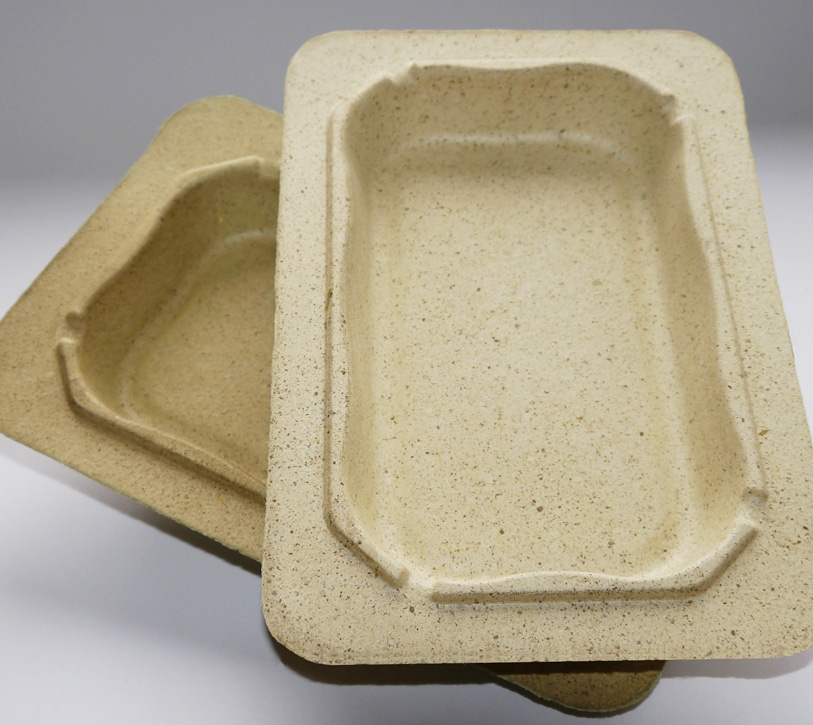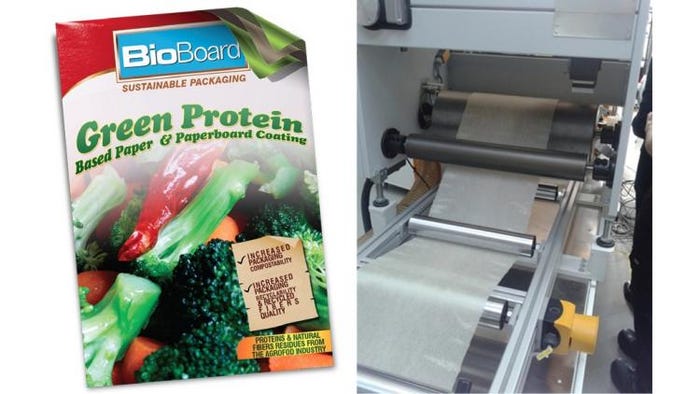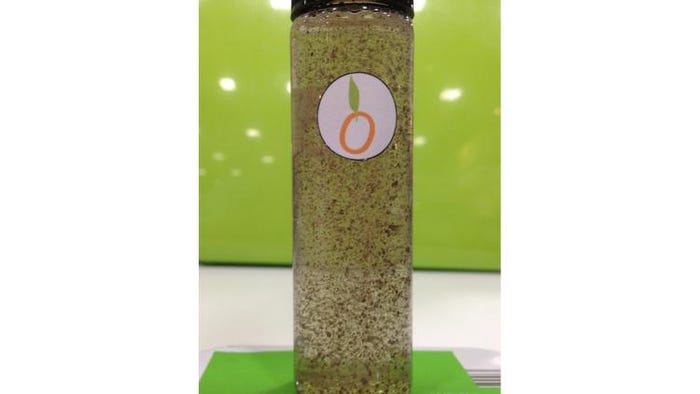
Three resourceful companies are changing the rhetoric on waste by reimagining it as feedstock for innovative bio-based packaging materials.
Free trade coffee, biofuels, recycled plastics, non-GMO apples, conflict-free minerals, organic kale: What do all of these concepts have in common? They demonstrate the power of material feedstock in the market; that is, the idea that where something comes from impacts the sustainability of the product.
Why make plastics out of non-renewable fossil fuel when you can recycle? Why rely only on fossil fuel when you can synthesize biofuels from corn? Why buy coffee or diamonds from war-torn regions where political agendas are fueled by such commerce when you can sleep easy at night, knowing that tomorrow morning’s half-sweet non-fat caramel Macciato is coming from the most ethical of bean growers?!
I was at a sustainable packaging conference a couple years ago where I watched a presentation from the World Wildlife Fund. This was when I was first introduced to the ethical implications of making products like plastic and fuel out of food; how can you justify producing resource-intensive crops like corn or potatoes for anything but human consumption when so much of the worlds’ communities are starving, the WWF inquired? This isn’t a new argument but it is powerful; and, perhaps, helped lay the foundation for the new wave of biomaterials being constructed by several innovating companies.
What began as an investigation into “the future of sustainable materials” following the publication of “Yesterday’s ‘promising’ green materials: Where are they now?” has evolved into a discussion of how waste is being repackaged, literally. I am reminded now of Braungart’s and McDonough’s analogy of the cherry tree in “Cradle to Cradle: Remaking the Way We Make Things”:
“Consider the cherry tree: thousands of blossoms create fruit for birds, humans, and other animals, in order that one pit might eventually fall onto the ground, take root, and grow. Who would look at the ground littered with cherry blossoms and complain, "How inefficient and wasteful!" The tree makes copious blossoms and fruit without depleting its environment. Once they fall on the ground, their materials decompose and break down into nutrients that nourish microorganisms, insects, plants, animals, and soil. Although the tree actually makes more of its "product" than it needs for its own success in an ecosystem, this abundance has evolved (through millions of years of success and failure or, in business terms, R&D), to serve rich and varied purposes. In fact, the tree's fecundity nourishes just about everything around it.
“What might the human-built world look like if a cherry tree had produced it?”
Perhaps it might look like a world where methane gas is collected from water treatment facilities and made into bioplastics?
Maybe it looks like a world where waste protein from cheese production is the feedstock for packaging laminates?
How about a world where local waste is used as the feedstock for local packaging solutions?
What follows is a discussion of how three innovating companies are changing the rhetoric on waste, repackaged.
Packaging innovation: Re-engineer local waste cellulous fibers for local food packaging (see photo above)
Trial: Wheat-straw-based packaging
Company: Zelfo Technology / Bio-Lutions GmbH
Zelfo Technology is focused on re-engineering natural cellulous fibers to enhance performance properties, like material strength. By opening and engineering the fibers using patented techniques, the surface area is increased, which facilitates hydrogen bonding and mechanical locking of the fibrous network. Instead of using chemical binders to create a package that uses low-grade waste, Zelfo Technology re-engineers what little cellulous there is so that the material binds together without the need for additional processing. Zelfo can use any source of natural fibers, including agricultural, industrial and post-consumer waste.
In 2014, Zelfo was approached by Hamburg-based company Bio-Lutions GmbH (formerly Upgrading GmbH). CEO Eduardo Gordillo challenged the company to produce a fully waste-based pulp formed package. The two companies entered into a development partnership and ran a number of trials with bagasse and wheat straw to assess the processing parameters. These proved successful and subsequent trials were run in China specially using modified pulp forming processing technology.
In the summer of 2015, similar packages were produced from tomato stems and hemp shiv. The hemp came from South Africa where the intention was to supply the grape-growing industry with hemp shiv packaging. The concept became “using local waste for local packaging requirements:” bagasse-based packaging for fruit growers in Brazil and tomato stalk-based packaging for tomato growers.
Managing director, Richard Hurding, explains, “The packaging market for growers of fruit and vegetables is based on remote suppliers dictating prices and supply. With our solution, an arrangement is established between BioLutions and the food growers who need or can supply other local users with packaging made from their residual material. The BioLutions plant converts the materials and delivers an economic and sustainable product to the on-site or local user.”
For Hurding, wherever there is a combination of agro industries that have waste and need packaging, the Zelfo Technology fiber based system that BioLutions offers can be implemented: “In the developed world, there is no such thing as ‘waste’ agricultural materials as they all have a market value, whether it be for animal feed, bedding or bio-fuels,” Hurding says. “The main thing is to upcycle the material with a higher value than the current end uses offer. This means looking at products that upgrade residuals; not just taking them as they are.”
Next: Extract protein from agro-food waste for bioplastic production

Packaging innovation: Extract protein from agro-food waste for bioplastic production
Trials: BioBoard, WheyLayer, Leguval, ThermoWhey, OliPHA
Company: IRIS
IRIS is an applied research firm specializing in advanced engineering and process optimization. Elodie Bugnicourt, Ph.D., is the group lead of the Ecomaterials department, which works to develop solutions to client problems with some kind of sustainable approach, be it by improving the process, using renewable resources or reducing waste.
While bioplastics like polylactic acid (PLA) demonstrate advancement in polymer science, they also expose the ethical implications of using food like corn as feedstock for bioplastic production. Consequently, progress in this space is taking the form of extracting protein from agro-food waste for bioplastic production.
Bugnicourt, also BioBoard project coordinator, explains, “Protein is a biopolymer, it doesn't need further polymerization. First it needs to be separated from the other compounds in the waste. Most of the time, the first challenge is having the right purity of materials for the target application. Then you have to compound the protein with other plasticizers; this is to tailor the processability and mechanical properties. Once we get the right formulation, we validate the new material, and look for real world application.”
BioBoard is one of the several projects IRIS is working on to implement and scale up this approach to bioplastic production. Here by-product from cheese making is processed as pure whey protein isolates and potato pulp from starch production is dried and grinded. Then, proteins are modified to obtain thermoplastic pellets, which are extruded as a standalone film. The film is laminated onto board or other substrates using adhesives. At end of life, BioBoard can be organically recycled (composted) and the proteins promote composting.
The concept for the BioBoard came from a previous project that proved to be successful; here the protein-based bioplastic laminate was applied to plastic film to enhance its barrier properties. Unfortunately, the application of bioplastic coating to plastic film is easier than extruding the polymer to be laminated with paperboard. This processing difference between extrusion and lacquering continues to be one of the technical hurdles facing the large-scale commercialization of BioBoard.
In summary, Bugnicourt encourages us to create value from waste; she envisions a “cascading extraction of valuable waste to create new bioplastics and new applications in the future.”
Next: Methane-based bioplastic PHA (polyhydroxy alkanoate)

Packaging innovation: Methane-based bioplastic PHA (polyhydroxy alkanoate)
Trial: Micro beads
Company: Mango Materials
Mango Materials CEO Molly Morse, Ph.D., became interested in the naturally occurring biopolymer polyhydroxyalkanoate (PHA) about 10 years ago, when she was a graduate student at Stanford University. PHA is unique in that it has superior temperature and moisture resistance while also being able to biodegrade in any end-of-life disposal environment, be it waterways or home compost piles. Bioplastic PLA on the other hand has low heat deflection (without the addition of modifiers) and can only biodegrade in industrial composting facilities.
Traditionally PHA has been expensive and hard to find, made by feeding sugar to Ecoli bacteria. By feeding the bacteria methane gas instead of sugar, Morse and her team discovered that the cost of PHA could be significantly reduced. This is not only because methane can be a waste product, and therefore cheaper than sugar, but also that the process of converting methane to PHA is thermodynamically favorable compared to converting sugar to PHA. Morse explains, “It’s what the bacteria want to do. With sugar you have to break down the chain and rebuild using energy; in our process we just build, which is energy favorable.”
This all results in the production of PHA at a cost that is competitive with traditional plastics.
Methane gas for bioplastic production can be collected from a variety of industrial processes, like landfills, agricultural facilities, extinct coalmines and more. Currently the company is focused on the methane from water treatment, where the methane, in the form of biogas, is piped directly into their fermentation system where there are bacteria that have been naturally selected specifically because they eat methane to survive. Like how humans eat food and store the energy as fat, these bacteria eat methane and store PHA biopolymer inside their cell walls. Once extracted, the result is essentially a white powder that the company extrudes and pelletizes. It behaves similarly to polypropylene and can be molded into fibers, films, coatings and many other useful products.
The company’s first commercial application of its methane-based bioplastic is in micro beads that are found in face washes and other personal care products and historically made from persistent plastic. Ending up in our waterways, these micro beads have become the recent frustration of environmentalists and consumers alike for their environmental persistence.
In the context of packaging, Mango Materials intends to work with extruders to produce PHA films for a variety of uses, including thermoforming. The target market here would be food packaging, which, when contaminated by food waste at the end of its life, is not recyclable but is compostable.
Close to commercialization, this project demonstrates Morse’s interest in developing PHA based solutions for products that have a poor recycling option available, like agricultural sheets, fishing nets and food-contaminated packaging. “We are so incredibly excited about the current state of our technology,” says Morse. “We have a unique vision for a closed-loop bio-economy and are thrilled to make this a reality.”
Chandler Slavin is the sustainability coordinator and marketing manager at custom thermoforming company Dordan Manufacturing. Privately held and family owned and operated since 1962, Dordan is an engineering-based designer and manufacturer of plastic clamshells, blisters, trays and thermoformed components. Follow Slavin on Twitter @DordanMfg.
_________________________________________________________________
Learn about the latest developments in sustainable packaging materials and more at WestPack 2016, Feb. 9-11 in Anaheim, CA.
_________________________________________________________________
About the Author(s)
You May Also Like




